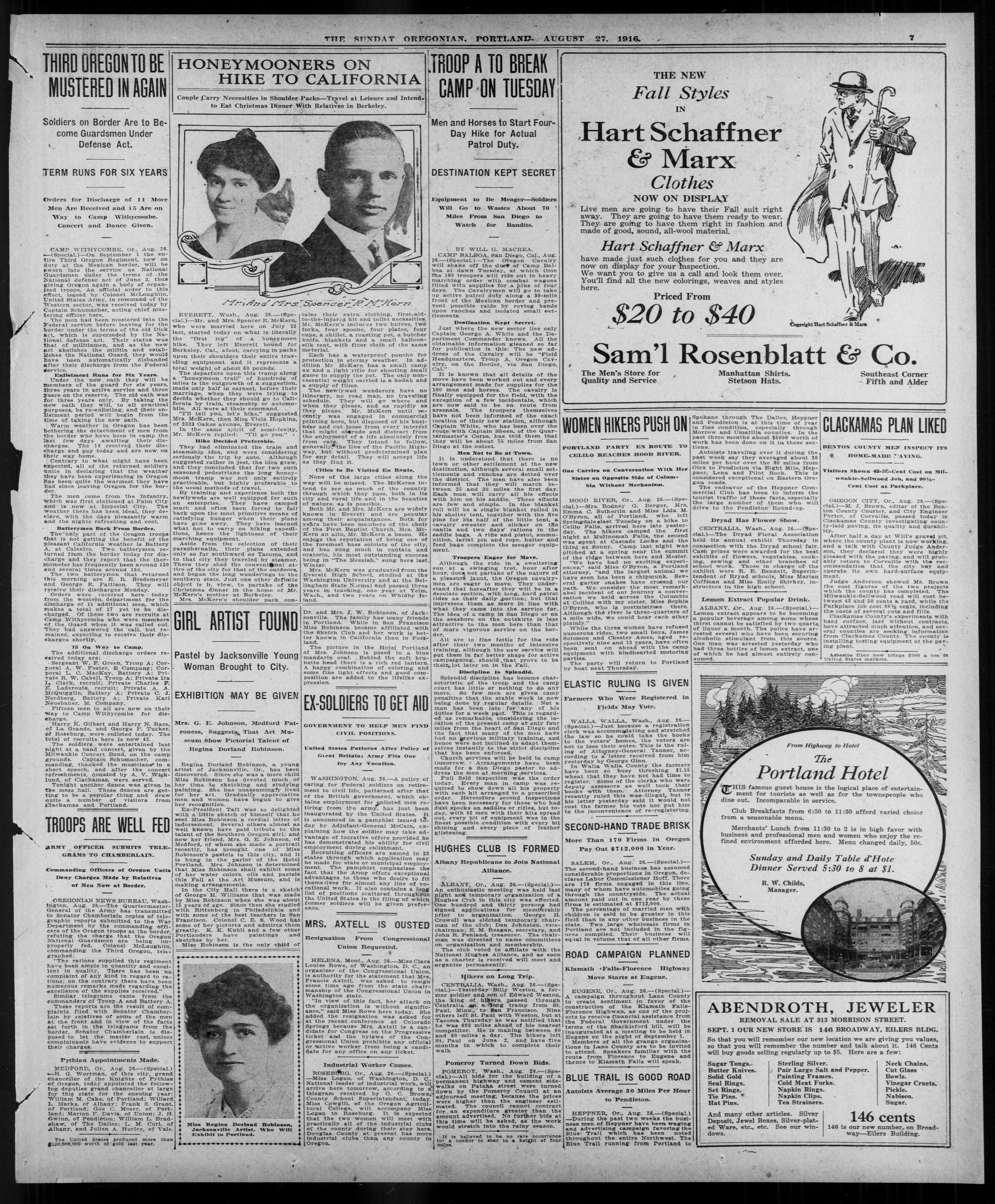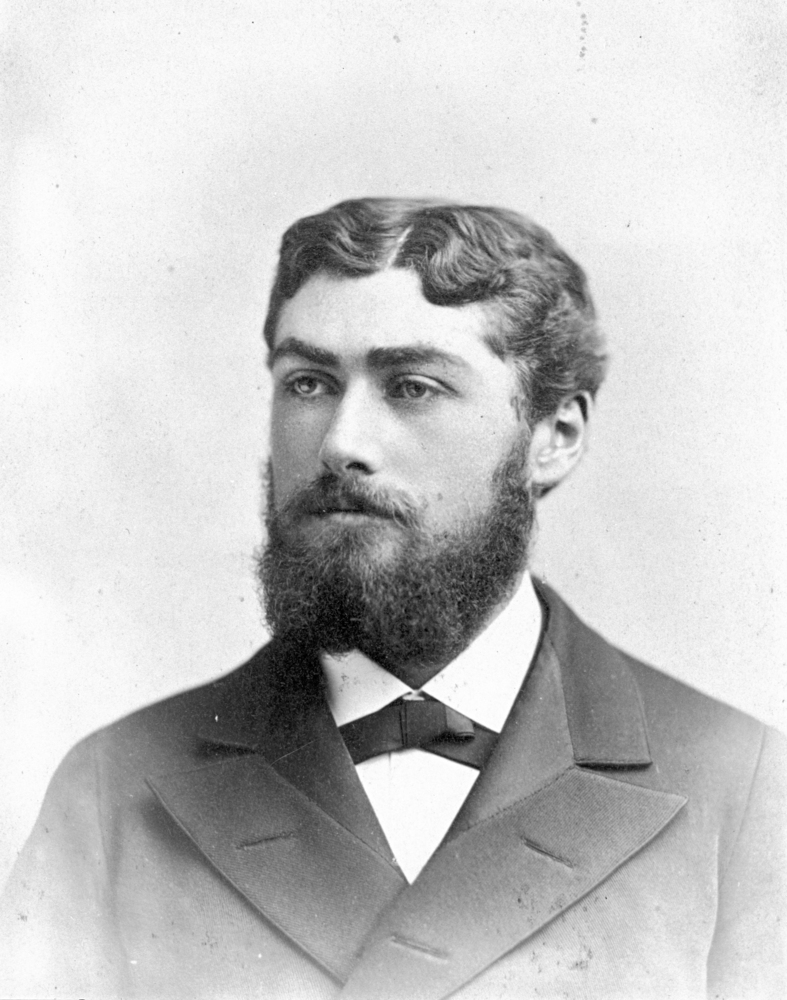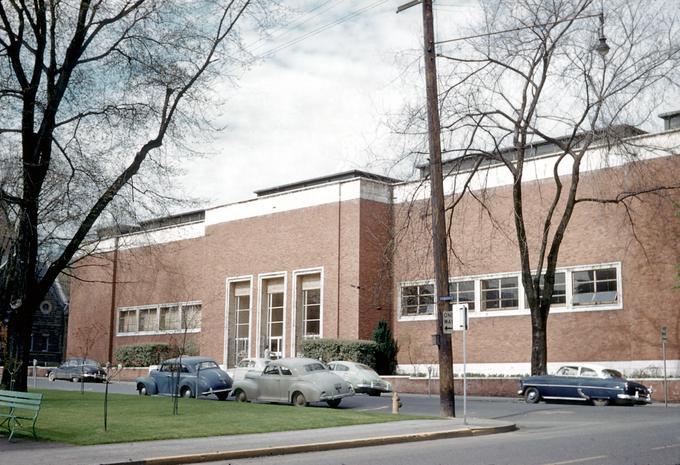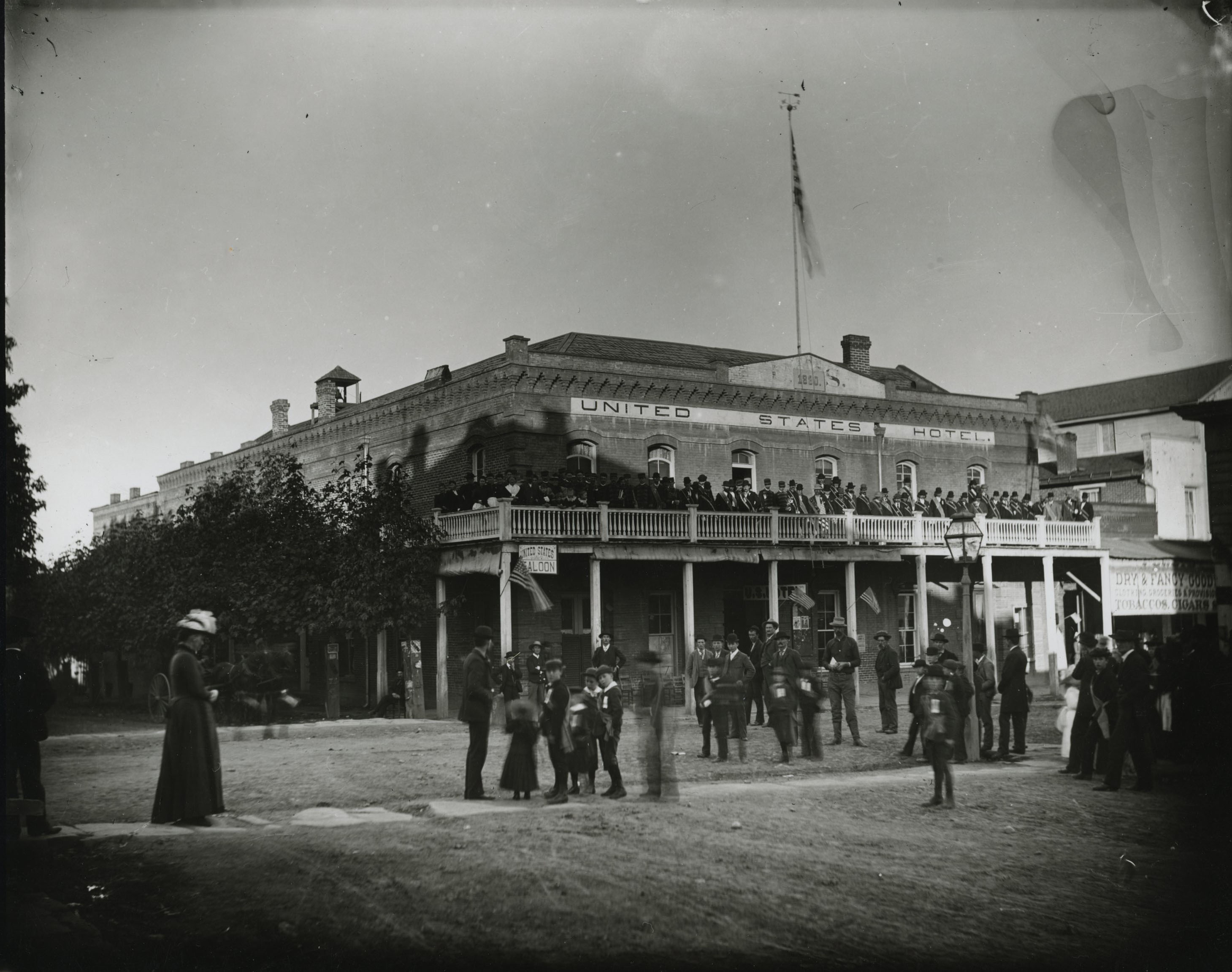Described as a child prodigy, early twentieth-century impressionist Regina Dorland Robinson showed remarkable talent at a young age. Versatile and prolific, in just ten years she created a significant body of work in charcoal, pastels, oils and watercolors before taking her own life in 1917 at the age of twenty-five. Exhibiting her art in her home state of Oregon as well as the northern California Bay Area, Robinson received praise for the feeling she conveyed in her still lifes, landscapes, and portraits, and for her brilliant use of color. Art patron C.E.S. Wood called Robinson a genius and stated that, “Oregon should and doubtless will appreciate the fact.”
Robinson was born on November 5, 1891, in the southern Oregon town of Jacksonville. Her parents, physician and drugstore owner Dr. James Robinson and Sarah Matilda (Tillie) Miller, were highly protective and indulgent of their third child, having lost the other two to diphtheria the year before Regina’s birth. They focused much of their own lives on developing their daughter’s exceptional talent and building her art career.
When she was fifteen and sixteen, Robinson received formal training in northern California and at the Oregon School of Art in Portland. While studying in Portland, she produced a series of dramatic charcoal drawings, now considered some of her best work. At age twenty, Robinson spent seven months at the Pennsylvania Academy of the Fine Arts, after which she created distinctively original and ethereal floral still life watercolors. From that time forward, her style in all media was more relaxed, less detailed, and increasingly spontaneous.
In 1911, Robinson and her mother moved to Oakland, California, where the young ingénue connected with the Bay Area art community. She joined the San Francisco-based Sketch Club, whose members included many influential avant-garde artists such as Xavier Martinez, Arthur and Lucia Mathews, and Anne Bremer. She also exhibited her work in 1912 and 1913 at the San Francisco Art Association.
Living back in Jacksonville by January 1916, Robinson exhibited thirty-five pieces in a one-woman show in nearby Medford. That same year, she received rave reviews for a life-sized pastel portrait displayed at the Portland Hotel of fellow artist and traveling companion Stella Johnson, and she showed her work at the Portland Art Museum. Robinson was poised on the brink of a promising career when, in the fall of 1916, her life imploded.
Earlier that year, she had met Charles Henry Pearson, twelve years her senior. The two married on October 25 in Portland and filed for divorce less than two months later. Robinson suffered what was termed a nervous breakdown in December and mortally shot herself on April 7, 1917. Local newspapers alluded to her "unhappy domestic experience," "over work at her art," and her inability to “throw off disappointments" due to her "unusual sensitivity and intense disposition."
Although her life was cut short, the legacy of evocative and inspiring artwork Robinson left behind is sizeable. One hundred and fifty pieces of her work are known to exist at the Southern Oregon Historical Society or in private collections. Others described in early twentieth century newspapers or exhibition lists may also survive in private collections.
-
![]()
Oregonian news article about Robinson in Portland (bottom left), August 27, 1916.
Courtesy University of Oregon Libraries.
Related Entries
-
![C.E.S. Wood (1852-1944)]()
C.E.S. Wood (1852-1944)
C.E.S. Wood may have been the most influential cultural figure in Portl…
-
![Portland Art Museum]()
Portland Art Museum
The Portland Art Museum, which opened in 1895 in the city library with …
-
![Southern Oregon Historical Society]()
Southern Oregon Historical Society
The Southern Oregon Historical Society (SOHS) collects, preserves, and …
Related Historical Records
Map This on the Oregon History WayFinder
The Oregon History Wayfinder is an interactive map that identifies significant places, people, and events in Oregon history.
Further Reading
Allen, Ginny and Jody Klevit. Oregon Painters, The First Hundred Years (1859-1959). Portland: Oregon Historical Society Press, 1999.
Curler, Dawna. A Lasting Impression: The Art and Life of Regina Dorland Robinson. Jacksonville, Oregon: Southern Oregon Historical Society, 2007.




